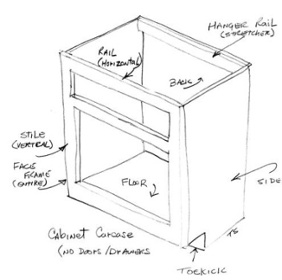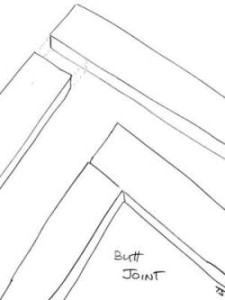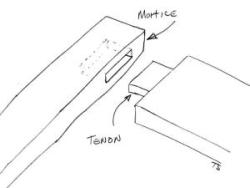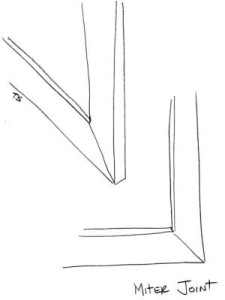Most consumers focus on style and functional elements when they begin thinking about a new kitchen. But before you can pick out the perfect door style and finish for your space, it’s a good idea to get familiar with the cabinet itself.
Your designer is likely to point out unique construction or functional features of cabinet lines that fit your tastes and budget. A good understanding of cabinet components and industry terminology will help you “speak the language” with your designer.
Cabinet Components
Frame (Face Frame)
The front (facing) side of the cabinet where the doors and drawers will touch when closed. The frame is generally made up of vertical wood strips called “stiles” and horizontal strips called “rails”. The face frame can be made of natural wood or particle board laminated with wood-grain, painted, or other finishes.
Sides
Typically made of particle board or, in higher-end cabinets, plywood. In many cases, the sides of the cabinet will have a laminated finish engineered to match the face frame. Exposed cabinet sides can often be upgraded to matching wood veneer or even solid wood in higher-end lines.
Back
Typically made of fiber board, particle board or plywood. Lightweight backing materials will include a horizontal “hanger rail” for added lateral strength and through which the cabinet will be screwed into the wall.
Toe-Kick
The molding that is applied to the facing side of the recessed area under the face frame of the cabinet. This is literally where your toes would touch if you stood too close to the cabinet.


Joinery Terms
Butt Joint
A simple joint created by butting one piece of wood against another and attaching with glue, staples, or screws.
Mortise & Tenon
A joint created by gluing the mortise inside the tenon. From the outside, this joint would appear to be a butt joint, but would be significantly stronger and more durable.
Miter Joint
A joint created by gluing, stapling, or screwing two pieces of material together at a 45° angle. Mitered corners are often found on mid-range to high-end cabinets.




Recent Comments